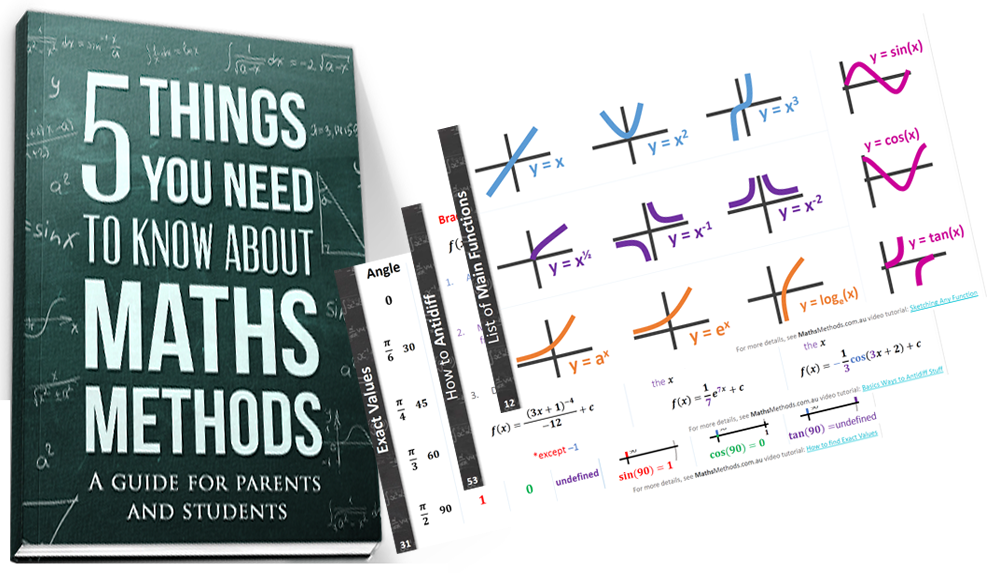Read this if you are doing Methods next year!
If you’re about to go into Year 12, then scroll down a bit as you already know what Year 11 Methods was all about 🙂
If you’re going into Year 11, in the first term you’ll generally cover a lot of sketching graphs and the algebra related to this. Typically, there is also bit of probability and a few other graph related topics which you haven’t seen yet. The newest topic you’ll cover is called “Calculus” which is a lot scarier than it sounds – it’s mainly about calculating the gradient of graphs (Hit reply if you’d like a 30 second video explanation on this).
I’ve kept this as simple as possible, but there is a great deal of new stuff in Year 11 and it moves a lot faster than Year 10. Each topic is built upon the earlier ones, so make it’s worth staying on top of each topic or it’ll make it a lot harder in the long run. Almost everything you learn is vitally important to Year 12, so it’s better that you get prepared now rather than falling behind in the future. If you can, get some study done in the holidays or use some of the resources on my website, such as the video tutorials.
If you’re going into Year 12, you will cover most of the Year 11 in the first two terms, plus a few additional topics thrown into the mix. You will also go into Calculus in much more detail and learn a variety of new techniques. The biggest difference, however, is that Probability becomes a major topic and takes up almost a third of the year. For example, you will learn to use Calculus in Probability (which is actually not as bad as it sounds).
Although a lot of the content is similar, the additional topics means that classes move a lot faster and the questions are more challenging. It’s even more important to understand the concepts thoroughly AND do plenty of tough practise questions as early as possible.
New for 2023 for Year 11 & 12, the curriculum is changing this year but the changes are relatively minor. The one that has been talked about the most is something called "pseudocode." Pseudo basically means "fake" and code means "giving a computer a series of instructions." Pseudocode is basically a simplified form of giving a computer instructions and is used to help computer programmers write down their ideas before they create real code. Don't worry, it's not a huge part of the curriculum 🙂
Enjoyed this? Get more stuff emailed to your inbox!

